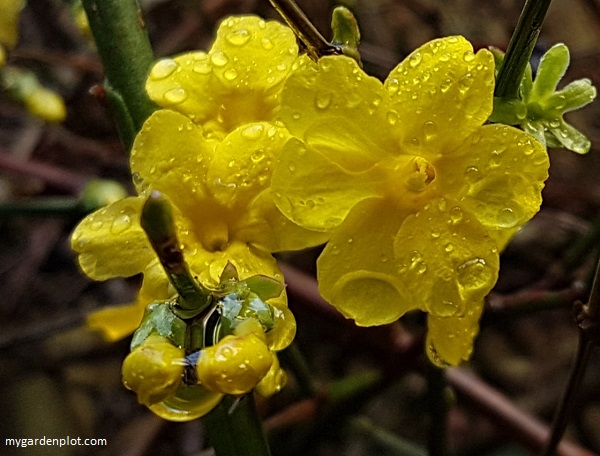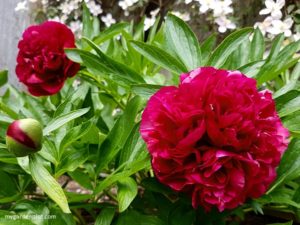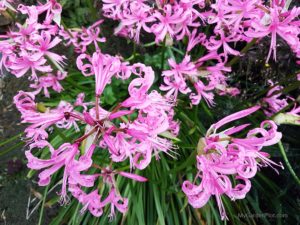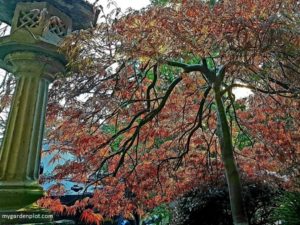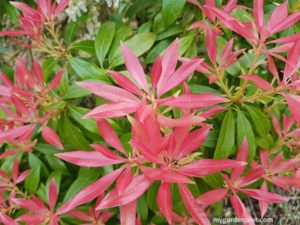About Jasminum nudiflorum (Winter Jasmine, Winter-Flowering Jasmine)
The Jasminum nudiflorum, known as winter jasmine or winter-flowering jasmine, offers a rare pop of vibrant colour in a winter garden. It can bloom from as early as late November and continue through to February. The winter jasmine is a deciduous plant native to China. The trailing branches can spread over 3 metres (10 ft) with bright yellow flowers that are about 2.5 cm (1 inch) in diameter. By the time the flowers bloom, the long arching stems will likely be utterly bare of foliage. The flowers, unfortunately, are unscented, unlike the sweet smell from the summer jasmine climber. Outside of the winter interest with yellow flowers, the remaining time it is covered with green leaves. It is a vine that needs to lean on a structure for support and to be tied. Tips below on how to grow, care and prune winter jasmine climber.
Jasminum nudiflorum (Winter Jasmine) At A Glance
Type: Deciduous
Location: Full Sun / Partial Shade
Seasonal Interest: Winter Flowers
When To Prune: Spring
Size: Up to 3 metres (10 ft) tall and spread
Plant Hardiness Zones: 6, 7, 8, 9
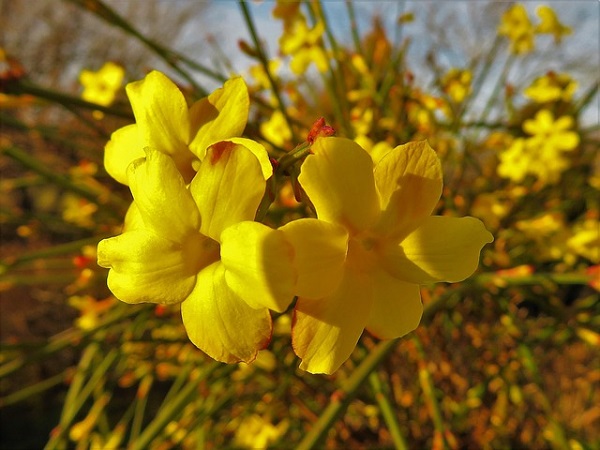
Winter Jasmine Structural Support
The winter jasmine is not a proper climber but more like a semi-clinging shrub or leaning vine with long slender arching stems that need to be trained and supported and tied to a fence, wall or trellis. A wired framework on a wall or fence helps to add ties and hold the long arching stems in place. And it works well, allowing changes to the support ties after it is pruned. It also looks attractive cascading over a wall or down an embankment, and it can be left to sprawl loosely over a fence.
How To Grow And Care For Winter Jasmine
The winter jasmine grows easily. If left unpruned, this vine can become a mass, and any trailing branches that touch the soil will quickly take root. Though not invasive per se, it can take over a section if not given an annual pruning. More in the section below about pruning winter jasmine.
Winter jasmine can grow in a sunny or partially shady location. Ours grows over a north-facing fence, ideal for its location and supporting its long arching stems. They thrive in fertile, humus-rich and well-drained soil, but it is known to survive in just about any soil condition.
Add a layer of rich organic topsoil or mulch in spring to conserve moisture during the hot summer. Mix in a light amount of slow-release balanced fertilizer with the mulch in spring.
A heavy frost can damage the flowers but will not harm the plant. Cold hardy to -18C (0F), but it does not tolerate extreme cold.
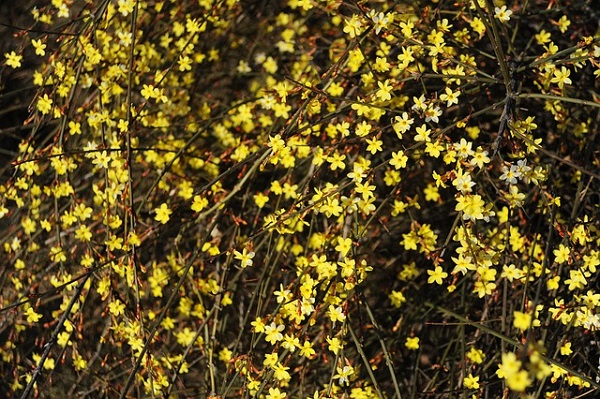
When And How To Prune Winter Jasmine
The winter jasmine benefits from spring pruning to regain control and encourage new stems and flower production—annually thin out straggly or older stems to keep it tidy and from getting overcrowded. To encourage new growth prune side shoots above healthy buds. Remove any deadwood or damaged stems. Review if any stems need to be tied gently and supported again.
Neglected plants can tolerate a hard prune to above the soil level or at about 20 cm (8 inches) from the base – this can be done every few years. It will need about two years to flower again as it blooms on the previous year’s growth.
Hard prune or thin out in early spring after flowering.
RELATED TOPIC: Buyer’s Guide On How To Choose Hand Pruners (Secateurs)
Winter Jasmine Pests And Diseases
Winter jasmine is generally trouble-free, but young plants can be affected by aphids or mealybugs. It is deer resistant.

